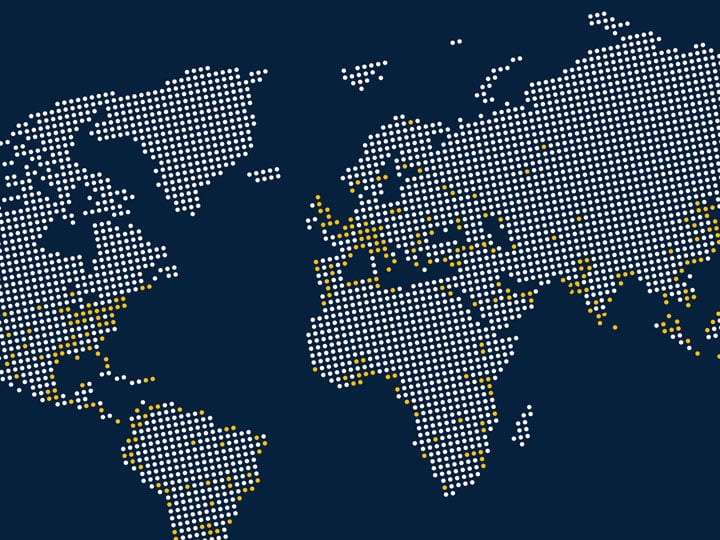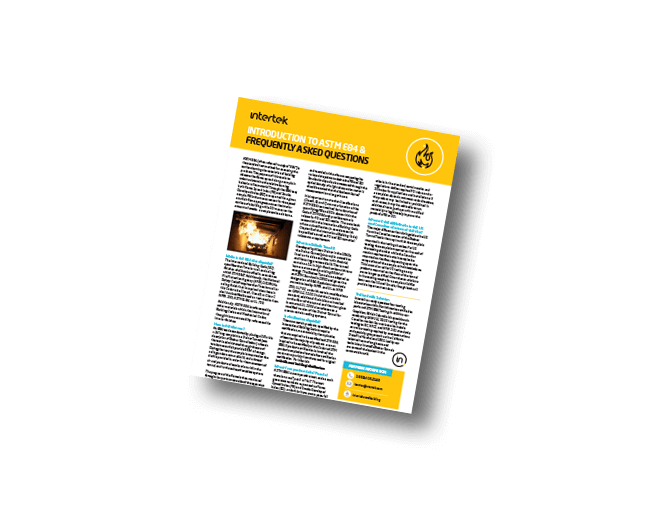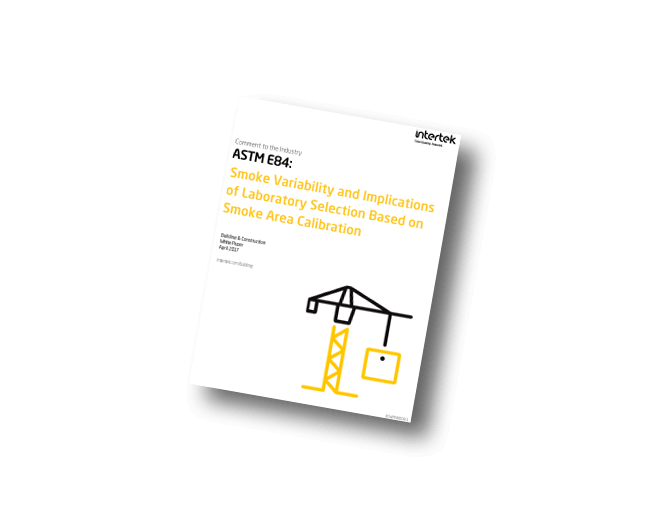ASTM E84 Testing and Certification Solutions for Building Materials and the HVAC industry
ASTM E84 Certification Requirements:
The requirements for ASTM E84 certification can be found throughout the building code for various products. Some products, such as those identified in Chapter 14 - Exterior Walls, require certification by reference to labeling requirements of 1703.5 (2018 International Building Code). Fire-retarded treated wood, and foam plastics are required by their specific chapters, Chapter 23 and 26, respectively, to be certified by an approved agency. Certification is not required by the building code for interior finishes but does require testing in accordance with ASTM E84. Many manufacturers of interior finishes chose to certify their products through an approved agency for ease of approval and demonstration of an elevated quality control system for their products.
ASTM E84 Scope:
This 10-min fire-test-response standard for the comparative surface burning behavior of building materials is applicable to exposed surfaces such as walls and ceilings. The test is conducted with the specimen in the ceiling position with the surface to be evaluated exposed face down to the ignition source. The material, product, or assembly shall be capable of being mounted in the test position during the test. Thus, the specimen shall either be self-supporting by its own structural quality, held in place by added supports along the test surface, or secured from the back side.
Applicable Products:
Building Materials, Wallcoverings, Insulation Materials, Panel Products, Paints, Adhesives, Sealants and Coatings, Interior Finishes.
Related Standards:
ASTM E84, UL 723 and NFPA 255 utilize the same equipment and test method. All three are essentially the same test and are often referred to interchangeably by the building code.
ASTM E2768 is a similar method sometimes referred to as a 30-minute tunnel test. This method is most commonly used to test fire retardant treated wood products.
CAN/ULC S102 utilizes the same equipment with a slightly different set-up and test method to evaluate building materials for use in Canada
Check out our latest document covering FAQ on ASTM E84, the standard test method for assessing the surface burning characteristics of building products
HVAC Ducts and Tapes
Test Procedure:
An ASTM E84 test is conducted by placing a 24” wide x 24’ long sample into a Steiner Tunnel wherein the test is administered through the use of two burners which provide 89kW of energy. During the 10-minute test, the sample is mounted on the ceiling under a removable lid, and a forced draft is provided in order for the movement of air and products of combustion within the tunnel, and to the exhaust/scrubber system.
The Flame Spread Index (FSI) is calculated with data recorded from flame travel that is observed through the windows located on the side of the chamber. The computer software records the flame-spread position during the test 10-minute test. The area under the flame spread curve is used to calculate the Flame Spread Index.
The Smoke Developed Index (SDI) is calculated with data recorded from a photo meter system that consists of a light source, photocell and specialize electronic equipment. The light beam travels vertically through a vent pipe and the computer software records the light obscuration as the smoke travels through the light beam path during the test. The smoke area under the smoke curve is used to calculate the Smoke Developed Index.
United States
For US testing, the sample is mounted on the horizontal ledges of the testing chamber. This location is considered the top of the tunnel chamber or the ceiling.
Canada
Requires that certain samples be mounted on the floor, depending upon the composition of the sample, or its intended use.
End Result
According to ASTM, the purpose of this test method is to determine the relative burning behavior of the material by observing the flame spread along the specimen. Flame Spread Index (FSI) and Smoke Development Index (SDI) are reported for a given sample. However, there is not necessarily a relationship between these two measurements. FSI is the measurement for the speed at which flames progress across the surface of the sample, while SDI measures the amount of smoke a sample emits as it burns. Code officials, designers, and architects use the FSI and SDI results to determine if the product meets applicable building codes requirements based on the results of this test. Most commonly, results are correlated as shown in the chart below for interior finishes (Reference Chapter 6 of the International Building Code).
Classification:
- Class A
- Flame-Spread Index (FSI) - 0-25
- Smoke Development Index (SDI) - 450 Maximum
- Class B
- Flame-Spread Index (FSI) - 26-75
- Smoke Development Index (SDI) - 450 Maximum
- Class C
- Flame-Spread Index (FSI) - 76-200
- Smoke Development Index (SDI) - 450 Maximum
It’s important to note that classifications are utilized for interior finishes. There are product types that are prescribed to have specific numeric values for FSI and SDI for approval.
Intertek Testing Locations:
Elmendorf, TX, York, PA, Coquitlam, BC Canada, Shanghai, China
Knowledge Center
Building Health & Wellness: An Overview of Services
Acoustical Testing & Consulting Resources
Remote Pre Inspections for NFPA 80 / 101
Protek - Safety. Everywhere. Every Day
Fire Doors 101: Your Guide to Testing and Certification - Webinar Recording
Tornado Testing & Certification Requirements - Webinar Recording
Plumbing Products Testing & Certification - Webinar Recording
The Evolving Code Evaluation Process White Paper
Proposition 65 & the Furniture Industry Webinar Recording
Why Planning for FCC Certification is Key to Success in the Door Hardware Industry White Paper

Upcoming Tradeshows & Events
Resources
- Search and Buy Building & Construction Standards
- SpecDirect
- Building Products Directory
- Project Connect (formerly myATI) – B&C Products
- Construction Hive – B&C Projects (PSIQest)
- My TestCentral




